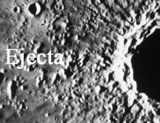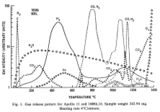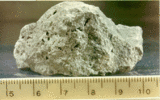Featured Articles
Contents
Currently Featured Article
Featured article: Moon Zoo | 11 May 2010
Moon Zoo is a crowdsourcing project from the Zooniverse community that uses images from the Lunar Reconnaissance Orbiter.
Activities include counting craters, noting blocky craters, and checking relative differences between boulder-producing craters, and...(read more)
Previously Featured Articles
Featured article: Cratering on the Moon | 02 November 2008
Craters cover the surface of the moon and are the result of hyper-velocity impacts by meteorites. The velocity of meteorites upon impact varies, but is generally between 10 and 40 km/sec. This number is a combination of the ‘approach velocity’ and the ‘escape velocity.’ The approach velocity of objects refers to the velocity of the object with respect to the moon. This varies with the type of object (for example, long period comets generally have a higher approach velocity than short period comets) and the direction with which it approaches the moon (for example, if it approaching the moon ‘head on,’ it will have a higher approach velocity than...(read more)
Featured article: Volatiles | 05 August 2008
The primary resource of value to humans on the Moon is the volatile components found in the regolith. These are all the components that are gases at room temperature. Most of the volatiles have been deposited in the top layers of the Moon's surface by the solar wind over geologic time. A notable exception to this is Argon. the concentration of Argon in lunar soil is much higher than found in the solar wind, so must come from a different source. Especially, the isotope Argon-40. It is presently believed that the Argon-40 comes from radioactive decay of Potassium and/or Krypton deep within the lunar mantle or core(read more)
Walking in the presence of ganits here. Cool thinking all around!
Featured article: KREEP | 14 May 2008
KREEP is an acronym used in geochemistry to represent a mixture of K-potassium, REE-rare earth elements, and P-phosphorus. It is not only the main source of these elements on the moon, but also many other trace elements such as uranium, thorium, fluorine, chlorine, and zirconium.
...
So to get alloy ingredients for workable metals, nutrients for agriculture, industrial reagents and much more, special concentrations such as ilmenite and KREEP will play a vital role." - Peter Kokh (read more)









